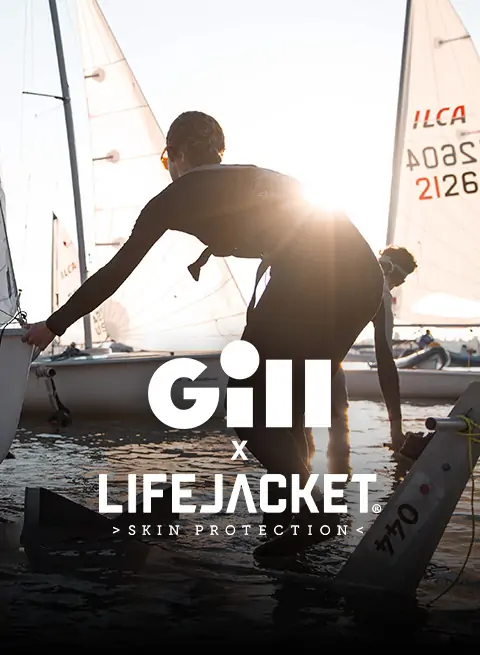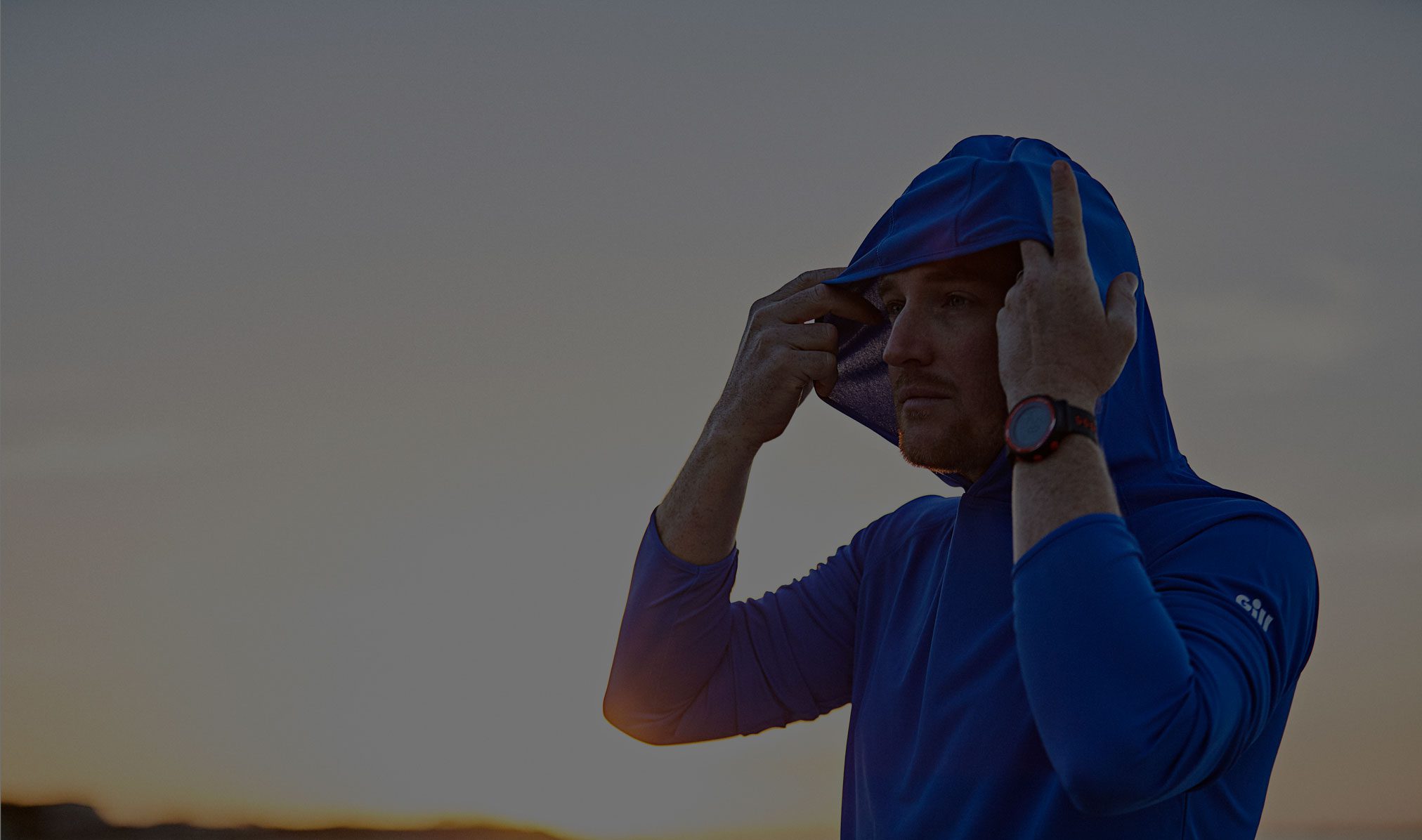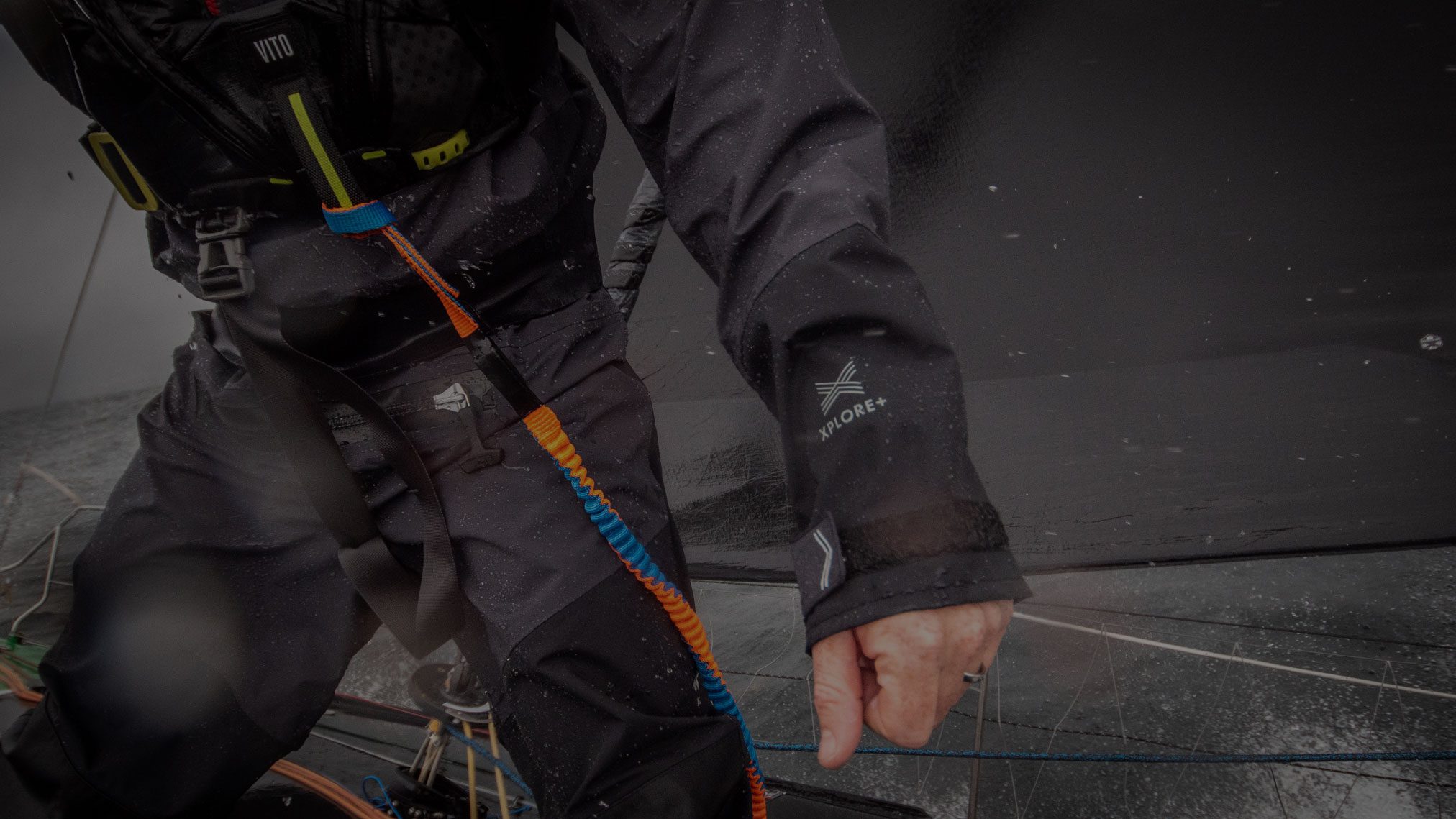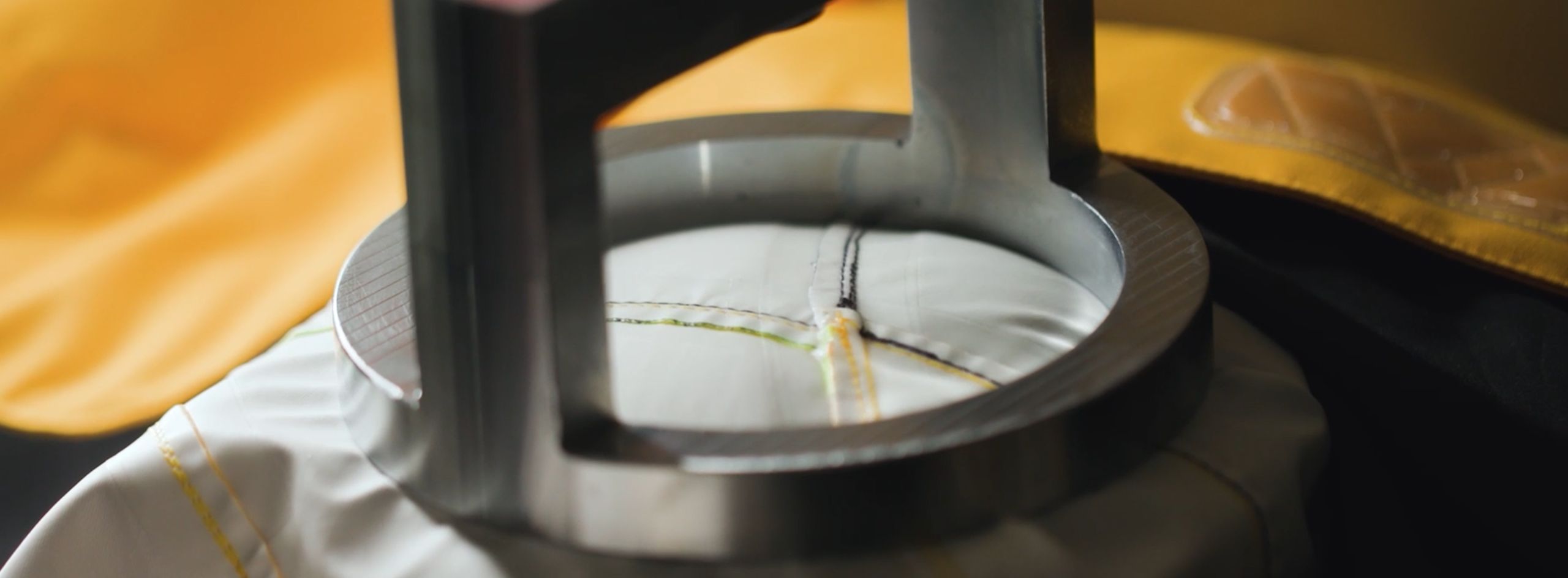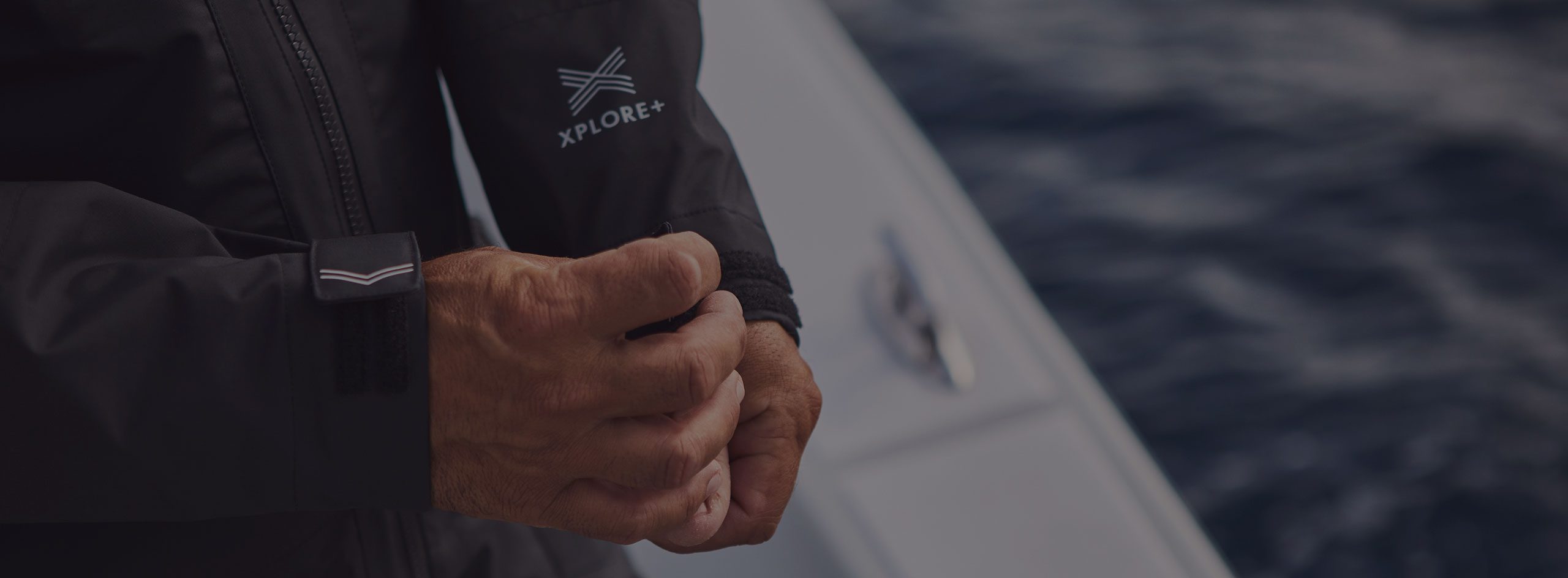Gill X Lifejacket: Skin Protection

There can’t be many sporting pastimes that expose your skin to the elements in the way sailing does. From biting British winds to beating Balearic sunshine, a sailor’s skin can become weathered – quite literally – after just one season.
A bit like ski instructors, skin damage used to be seen as a badge of honour in the sailing community: chapped lips, mangled hands, sun damage, inflamed-red cheeks and deep wrinkles.
Fortunately, people are waking up to the fact that weather-beaten skin doesn’t look so great and, most importantly, isn’t healthy.
Getting into deep water
Hours and hours exposed to wind, salt spray and year-round UV can take its toll on the body’s largest organ.
‘Everything in moderation’ is a common mantra for many things in life. The problem for pro and recreational sailors alike is that moderation can be hard to come by when stuck out at sea. Chief of all environmental aggressors for sailors is UV light. Even on a cloudy day, UV can damage skin cell DNA. Damage is accumulative over time and may lead to skin cancer.
To be clear, we’re not looking to be killjoys. We LOVE a day on the water as much as you do. We just want you to think of skin protection as an extension of your kit or gear. Sailing safe is about keeping you safe. In our world, that means making sure you protect your skin to stay healthy.
After reading this, you’ll understand how to avoid getting into deep water when it comes to your skin. You’ll learn how to protect your skin all year round, whatever the weather, so you (hopefully) avoid any serious and not-so-serious skin issues.

Getting to know your skin
Let’s start with first principles.
Think of your skin as the first line of defence against outside elements.
The skin’s major role is to protect your body from environmental ‘stressors’, extreme weather and harsh sea conditions. These environmental stressors attack your skin on a daily basis.
If your skin becomes damaged or compromised, it might not be able to perform it’s main job of protecting you. And that could mean things like bacteria or viruses getting inside your body.
Skin damage can be anything on a spectrum from soreness, dryness, redness, cracking, spots, itchiness, wrinkles or sensitivity, all the way to skin cancer (and thousands of other things in between).
Unfortunately, a tan also implies skin damage.
Six skin protection tips for sailors
Knowing all this, here are our essential skin protection tips for smooth sailing.
1. BE UV-AWARE
As mentioned, the gorilla in the room and chief of all aggressors is ultraviolet light.UV is responsible for 80% of premature skin ageing and 90% of melanoma skin cancers. Studies in Australia found that “owning a boat is a risk factor for skin cancer and because families are usually generational boat owners, the increased risk becomes hereditary.”
Here’s the important bit of science most people don’t realise. UVA in particular reaches your skin every single day and in equal measure throughout the year. It also accounts for 95% of the UV that reaches us on earth. So, as long as it’s light outside, UVA hits your skin – even through clouds and glass.
UVA penetrates the deeper layers of the skin meaning you can’t see the damage. It contributes to premature skin ageing and wrinkling by damaging the natural proteins under the skin’s surface. These proteins keep the skintight and strong but, when damaged, can’t provide the same structural support.
For a long time, it was thought that UVA couldn’t cause any lasting damage other than these cosmetic changes, but studies strongly suggest UVA enhances the development of skin cancers because the rays also cause DNA damage in the skin.
Given UV is ever present, the temperature outside or time of year doesn’t matter. On the water, UV hits you twice: once from the sun and again, as it bounces off the sea and back onto you. Combined, this almost doubles your UV exposure. For this reason, water can be a harsh UV environment particularly if you’re out for several hours.
So, for any time on the water – any time of year – use a good sunscreen before heading outside on all exposed skin. We recommend a minimum of SPF 30 and the European ‘UVA’ kite mark (or UVA 4-5*). Choose something that’s water resistant (typically an oil or a mineral-based sunscreen). No sunscreen can stay on your skin all day and protection levels will inevitably diminish if you’re getting sprayed by the sea, sweating or toweling. So, try to reapply every two hours if you can and don’t forget your lips, nose, back of the neck and ears – commonly missed spots where people often burn.
2. IS YOUR KIT ‘UPF’?

Another way to protect the skin is by wearing a physical barrier that blocks attack i.e. clothing. But beware – not all fabrics are created equal. For example, a white cotton t-shirt is the equivalent of SPF 5 and you could feasibly experience invisible skin damage through it.
Ultraviolet Protection Factor (UPF) is to fabrics what SPF is to sunscreen. It’s a measure of how much UV protection the fabric provides. Denim is UPF 1,700 so it’s super protective, but you probably wouldn’t want to operate a coffee grinder in the middle of a race wearing your favourite 501s…
Look out for UPF 50+ active wear. It’s a good option because the protection is in-built and always ‘on’. It doesn’t degrade over the course of a day at sea.
3. DON’T FORGET YOUR HEAD AND LIPS
Depending on the boat you’re on, try to seek shade as much as possible.
It might get hot but your head’s a sitting duck under strong sun. That’s even more true to all the men out there who are bald or have a close cut on top.
So, consider finding a hat that stays on and which has a wide brim to cover your neck and face too. There are breathable, lightweight, UPF 50+ variants out there. It’s a whole lot better than a sunburnt head or sun stroke.
Also remember your lips even if they don’t normally need any special attention. Lips don’t produce sebum so can quickly become dry. They also burn more easily than other areas of skin. Keep an SPF lip balm in a pocket for both UV protection and moisture. Reapply constantly throughout the day.
4. PROTECT YOUR EYES

For the same reason it’s ideal to protect your skin from UV every day, we should probably all wear sunglasses more often than we think.
Protecting your eyes against sunlight and glare from water is really important for your eye health. UV levels can be high even on a cloudy day and overexposure can lead to painful inflammation, known as ‘snow blindness’. It can also increase the likelihood of developing cataracts.
Sunglasses with UV400 protection (or which have the CE kite mark) and polarized lenses are a critical piece of kit. Low quality lenses can cause more harm than good.
5. NO MORE CHAFING
Chafing occurs when there’s repeated friction between skin and clothing (or equipment), leading to irritation, redness, and even blisters.
Continual rubbing of the skin’s outer layer (the epidermis) causes microscopic tears and that layer of skin can wear away, leaving the layer beneath it exposed. In the words of our very own Consultant Dermatologist, Professor Christian Aldridge, “chafing or friction dermatitis is principally caused by skin rubbing against skin, clothing or other materials, leading to sore, red inflamed skin which can crack, weep and even bleed if severe.” Given the skin’s role in protecting your body from the outside world, exposed skin is something you need to try and avoid.
Be sure to apply a good amount of lubricant to areas you know you might chafe and avoid pain, discomfort and blisters. Think about areas where your skin will come into contact with ropes, clothing or other sailing equipment.
6. END OF DAY SKIN PROTECTION ROUTINE
After hours at sea, try to get into the habit of helping your skin recover. Winter or summer elements are just as tough on your skin so a year-round routine can make a big difference.
When we say ‘routine’, we simply mean cleaning your face at night and moisturising in the morning and evening. Both can take as little as 30 seconds and will really help your skin repair itself after being thrashed about.
Moisturisers can do two things depending on their ingredients: form a layer to block water leaving or try and add water to the epidermis. Use what you like and apply after washing.
Apply straight after a bath or shower to seal in moisture while your skin is damp. Don’t forget about your hands and body – they definitely won’t say no to a daily layer of added moisture.







